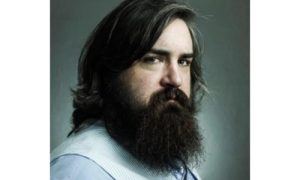When I was in school and the topic of the Holocaust would come up in class, everyone always had the same question: how could this have happened? How did Germany build concentration camps and gas chambers and crematoriums without anyone stopping them? How do you possibly get from Point A to Point B?

The answer, of course, is that the gas chambers don’t get built overnight. There’s a long road between Point A and Point B, and each milepost along it is just a little bit worse than the one before.
In the 1920s, most Jews could exist freely in Germany. They were citizens who could serve in the German military and they contributed to every aspect of German society. It wasn’t until Adolf Hitler was elected as Chancellor of Germany in January of 1933 that things began to take a turn.
About a month after Hitler assumed power, the Reichstag — the German parliament building — caught fire. While there’s some debate regarding who started the fire, it was a perfect opportunity for Hitler to accuse the Communists of committing arson as part of a plot to overthrow the German government. Hitler was able to persuade Weimar President Paul von Hindenburg to pass the Reichstag Fire Decree, which abolished the rights of the German people to assemble and protest the government.
This allowed Hitler to deal a massive blow to his political enemies, but he soon realized he could take it even further. He submitted a proposal to the Reichstag that would, if passed, grant all legislative power to himself and his cabinet, allowing Hitler’s government to act and pass laws without having to worry about the Reichstag or Hindenburg getting involved.
The proposal — called the “Law to Remedy the Distress of People and Reich,” but better known as the Enabling Act of 1933 — was passed, largely because Nazi militiamen intimidated voters into approving it.
This was the moment that all checks and balances were removed from Hitler. It was also the moment that Germany became Nazi Germany.
From this point on, life got progressively worse for German Jews. Nazi propaganda painted the Jews as responsible for Germany’s defeat in the First World War and every bad consequence that followed, such as inflation and the economic depression. Laws were passed to restrict the rights of German Jews and prevent them from earning a decent living or getting an education. The Nuremberg Laws of 1935 stripped German Jews of their citizenship and prevented them from marrying non-Jewish Germans.
Many Jews wisely fled Germany at this time, but many others could not; other countries were tightening their immigration laws and wouldn’t allow them entry. Then, in August of 1938, the Nazi government announced that it was canceling residence permits for foreigners within the country, which included German-born Jews of foreign citizenship. Families were split apart and scattered as Jews were forced onto trains out of Germany, many ending up penniless in Polish refugee camps.
On November 3, 1938, a 17-year-old Jewish kid named Herschel Grynszpan who was living in Paris with his uncle received a postcard from his parents. Polish Jews who had emigrated to Germany in 1911, the Grynszpans informed their son that they had been expelled to the Polish border and were destitute.
On Nov. 7, Herschel went to the German embassy in France and asked to see an embassy official. He was introduced to Nazi diplomat Ernst vom Rath and promptly shot him five times. Herschel Grynszpan was arrested and vom Rath died two days later on Nov. 9, 1938.
If the Enabling Act was the start of Nazi Germany, the death of Ernst vom Rath heralded the start of the Holocaust.
The day vom Rath died, Hitler’s Propaganda Minister Joseph Goebbels organized an all-out assault on the remaining German Jews. Riots broke out in the streets as Hitler’s secret police and storm troopers began attacking Jews, singling out the healthy males to be sent to forced labor camps. The storm troopers and the Hitler Youth would shatter the windows of more than 7,500 Jewish businesses. Jewish homes were looted. A total of 267 synagogues were destroyed by rioters. Tombstones were toppled and graves were defiled. There were mass arrests, rapes, murders, and by the time the dust settled, literally hundreds of suicides.
That event — Kristallnacht — was the first night of the Holocaust.
Going back to the original question, how do you get from Point A to Point B? You start with a populist politician who offers up easy answers to hard questions; for example, telling people the reason that their government doesn’t work for them is because of all the foreigners and immigrants. Next, you strip away any checks and balances that would prevent said populist politician from lashing out against his political enemies. From there, it’s just a short path to open violence in the streets.
On an unrelated note, at a rally in Erie, Pennsylvania this past Sunday, former President Donald Trump said that crime could be eradicated overnight with one “rough,” “nasty,” “violent” day of police retaliation.
“One rough hour — and I mean real rough — the word will get out and it will end immediately, you know? It will end immediately.”
I’m not sure how the police officers in Trump’s hypothetical are supposed to determine which people are criminals during that real rough hour. I’m guessing you just look for the folks that you don’t think belong.





Amen!
Well written